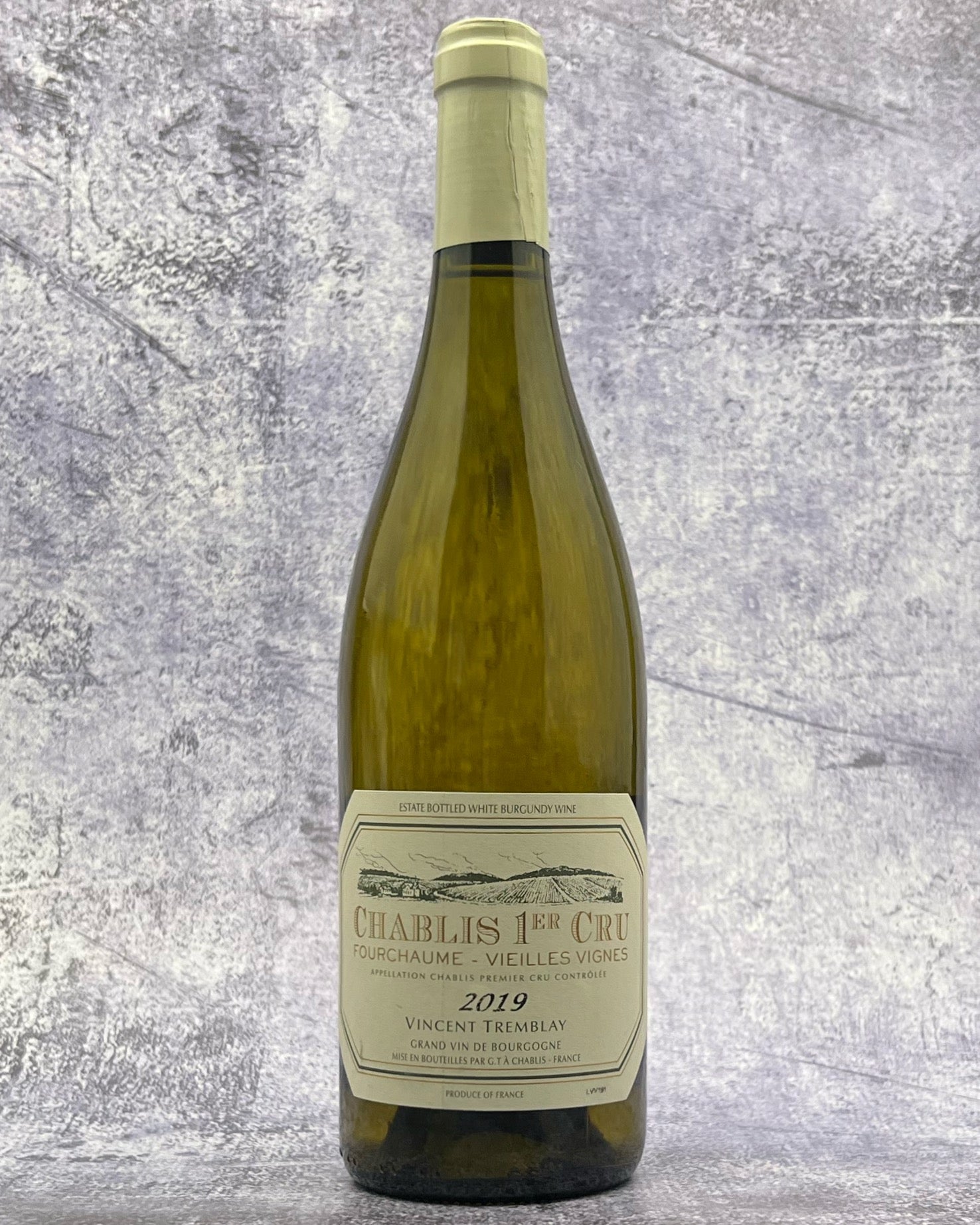Description
From: Burgundy, France
Varietal: Chardonnay
Taste & Critical Acclaim: This classic Chablis 1er Fourchaume VV is all things complex, intense, elegant, and finessed, but with the added bonus of being rounded and lush without coming across as tropical or buttery. All the classic Chablis characteristics apply here [zesty, fresh lemon, lemon confit, flint, saline minerality, white flowers, crisp green apple, and oyster shell], but with a sultry, lux layering of melt-in-your-mouth texture that amps this wine up more than a notch or two.
2019 Chablis 1er Fourchaume Vieilles-Vignes
Planted in 1951 by grandfather, half a hectare
Different, deeper aromatics. More supple and concentrated – a different style, slight cushioning from the concentration – texturally different – melting flavour over the palate. Contemplative but with an extra width of mineral finishing flavour without losing its elegance – a great finish again – a great Fourchaume! - Bill Nanson
Pairing: Oysters, mussels, grilled sardines, escargots, or prawns with garlic butter (check out the Steamed Clams With Garlic-Parsley Butter and Leeks by David Tanis for a slight twist on these pairing options), poached, rotisserie, or lightly grilled chicken, salads, ham in the Chablis style (ham in a creamy white wine sauce), veal chops, truffle risotto, strong, runny cheeses, and almost anything from the sea will pair wonderfully with this exceptional old-vine premier cru bottling.
Steamed Clams With Garlic-Parsley Butter and Leeks
By David Tanis
About. Gerard Tremblay is officially en retrait, although his retirement is like that of many growers in that he continues to work, both in the vineyards and the cellar. His son Vincent Tremblay has now taken over the reins. They farm an impressive 35 hectares (about 90 acres) of vines, in appellations from Petite Chablis to Grand Cru Vaudesirs. The wines are terrific and extremely well-priced. Tremblay’s style is to press very carefully and slowly, to avoid extracting harsh or green tannins from the seeds. Then after a 24-hour settling, the wine is racked gently off the gross lees into temperature controlled tanks for a slow fermentation. With no vines under 40 years and most planted in 1957, this is truly an old vine cuvée.
The few sentences above that are in bold and italicized are done intentionally to bring attention to the change of guard and, thus, the eventual Domaine name change: Domaine Gerard Tremblay, now known as Domaine Vincent Tremblay. It’s the same domaine, but now officially under Vincent’s name. We wanted to clarify this before any confusion arises from reading the following two articles on the Domaine. Those two articles we’re posting below are for Domaine Gerard Tremblay, but they’re interviewing Vincent.
The first article we’re sharing below is from Bergman’s Bourgogne by Ola Bergman, published in 2014 and is titled “Domaine Gerard Tremblay: The Road Back to Chablis - A Passion for Red.”
We're sharing the second article (excerpt from an article) from Bill Nanson of the Burgundy Report. This was published more recently, on May 31st, 2021, and is vital because it gives us all an update on how the Domaine is doing, as well as Bill Nanson’s tasting note of the 2019 Chablis 1er Cru Fourchaume Vieilles Vignes that we have in the shop.
Domaine Gérard Tremblay
12 Rue de Poinchy
89800 Chablis
About Fourchaume, the premier cru vineyard in Chablis from Vins de Bourgogne. Fourchaume lies to the north, along the right bank of the Serein. This flag-bearing Climat stretches approximately 4 kilometers between L’Homme Mort and Vaulorent and can be difficult to grasp geographically. Spread over 4 municipalities (Chablis-Poinchy, Fontenay-près-Chablis, Maligny and La Chapelle-Vaupelteigne), its appearance and topography are quite unusual. Its west and southwest exposure make it a sun-drenched terroir where grapes ripen early. Wide open to the valley of the Serein, Fourchaume exhibits a diversity of topographies. Yet a tendency can be discerned: its soils are predominantly brown clay and only slightly stony. Most of them are fairly deep and well-draining, with a good water supply.
Fourchaume and the neighboring Climats that fall under its banner cover close to 130 hectares.
Fourchaume has always had a special place in the heart of Chablis wine lovers. Complex and intense, it distinguishes itself by its elegance, its finesse and above all its uniquely voluptuous quality. A naturally generous and open wine in its early years, it can easily age 6 or 7 years before unveiling its full complexity.
The legends behind the name of this Climat don’t all paint a rosy picture... The name Fourchaume may come from "four à chaux" (lime kiln) or the word "fourche" (fork), referring to a fork in the road. However, this name might also refer to executions by hanging! In the past, those sentenced to death were hanged on gallows, in which case Fourchaume would be the contraction of "Fourches à hommes"...

